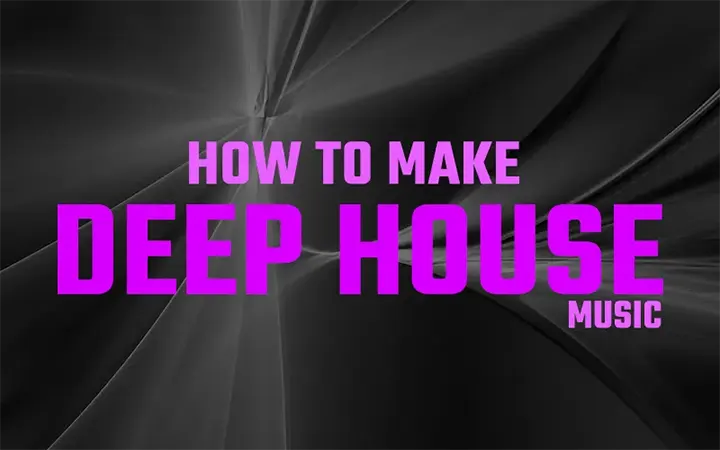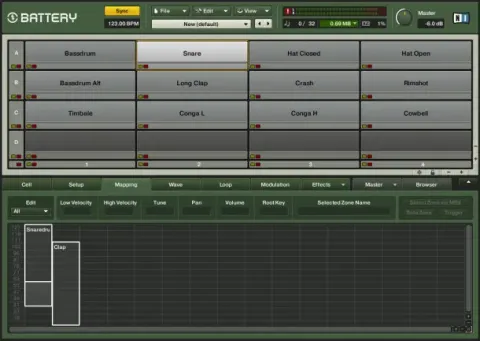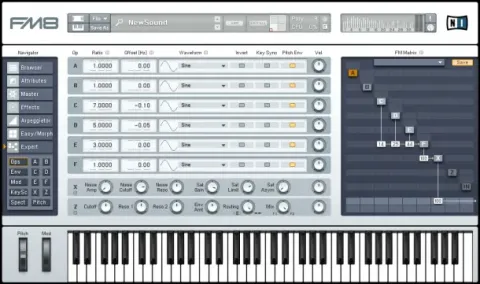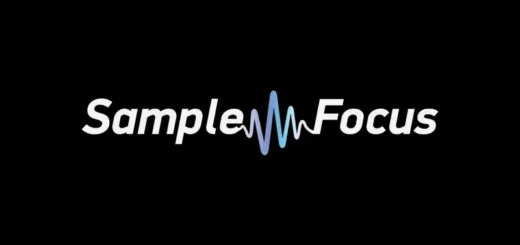Deep House Five basic music production tricks

We’ve separated Deep House production into five essential elements. A thorough mastery of these will come in handy when creating the kind of track that will flirt between the borderline of club banger and dreamy, hypnotic production to listen to in the privacy of your headphones.
1. Deep House, details about the tempo
Deep House is a very varied genre, and as such, has a fairly wide tempo range across its spectrum. We believe that a good starting point can be 123BPM – in any case, we can always vary this value more or less depending on the type of sounds used or the complexity of the percussive parts.
Most Deep House tracks are around 122-123BPM, and rarely go below 120BPM. However, it is quite common to find tracks that sound up to 130BPM, especially in the more commercial side of the genre.

2. Some notes about your beats and rhythms
The rhythmic structure of Deep House is quite classic because of the way the drum beats are distributed through the main loop. That is, we have a 4×4 time signature with the bass drum on black, and the snare on beats ‘2’ and ‘4’.
The weak or “off-beats” are every 1/8th note and usually contain the open chords , while the closed chords flow through the treble zone every 1/16th note, if the treble zone is not already occupied by an open cymbal to fill the space.
That said, it’s the way this basic rhythmic structure is embellished that makes the producer’s originality stand out.
Single redoubles, short hits or alternate snares, additional percussion sounds, short synth notes, etc… are added in a syncopated way and in different rhythms along the main loop to inject that funk touch and create the rhythmic body of the track together with the bass line.

We can add interest to the classic 1/4 kick drum pattern by adding other percussive elements at key points. It may be a cliché to double the kick drum to 1/8th note at the end of the measure before switching to a new section or coming to a stop, but this technique works wonders in generating excitement and making the track more engaging.
Use this technique in a more interesting way to anticipate the arrival of a new section, the lack of one, or perhaps a new and unexpected section.
Everyone expects a change or addition to the 16 bars, so play with the expectation of your listeners and embellish, for example, with some drums or percussion at 1/8th over the middle of your 16 bars. These simple details will make your productions much more interesting, original and surprising.
An accentuation of the end of a four bar loop with an extra kick drum towards the last bar is also a good trick to add some variety to your rhythm.

3. Sounds: Drum beats
The main groove in a Deep House track is created by the interaction between its bass line, the rhythmic embellishments in the drum parts and its synth or keyboard parts. Once we are clear about the note scheme and the main groove, it’s time to start tuning the sounds.
Deep House drums are usually based on the sound palette of the well-known Roland TR-909. For the kick drum, we will use a medium decay, with a short attack ratio on its pitch envelope.
If the envelope width is too short, it will sound like a Micro House or Minimal House style kick drum; on the other hand, if it’s too long, it will sound more like Trap… You’ll notice it right away when you hear it!
The snare is usually more pronounced in commercial Deep House tracks. But we prefer to start with a noisier and more subtle type, either by shaping the envelope of a TR-909‘s white noise or clap, or by using a snare like the one on the Boss DR110 drum machine.
In addition, you can give character to its sound by using a tambourine sample, for example, and tying these two together with some bit crushing distortion to really tie the mix together.

4. Sounds: the bass
In Deep House, bass sounds tend to be very present in the mix -sometimes acting almost as the main riff-, or a bit more muted supporting the groove of the track. The only difference here is the timbre.
A bass with more presence in the mix contains more harmonics – the use of FM synthesis is a good way to achieve that sound. With the Native Instruments FM8 synthesizer , for example, we can modulate the carrierwith multiples of the carrier signal.
This will produce a sound with many harmonics, which we can filter and edit the envelope to obtain a round and solid bass.
Bass sounds in the background are usually simple sine waves, or rather sawtooth waves filtered to the point of almost becoming sine waves.
Alternatively, you can use a pair of square waves slightly detuned and heavily filtered until they almost have the character of a sine wave.

5. Subliminal messages – background components
One of the most important aspects of Deep House is the amount of background sounds. These additions add depth, variety and enhance the track, but even though they are there, the listener does not appreciate them in the first few listens.
We are talking about subtle synthesizer arpeggios along several bars in a section, or a percussive ensemble that appears only in the repetition of certain passages.
This kind of trickery is almost a work of psychoacoustic engineering in the listening experience, but in Deep House it can make the crucial difference between a fresh, original sound and a dull, heavy one.
Once you have created some expectations in your listeners, based on what you have heard before, these elements will subtly work to bring freshness and novelty to the whole track.
The spaces are filled or interspersed, providing new layers of sound that complete the structure of the theme. They are not really noticeable, but the effect accentuates the energy and sense of progression in the track in an almost subliminal way.
This technique is not really new: Motown music producers were already well aware of the benefits of “brightening” key points of their tracks, usually with a large number of small percussive layers.
And it is with that large number of small sound layers and how you group and employ them, that you can generate a musical tension that engages your listener.
Arpeggios, small percussions, real world recordings, sampled reverb tails… Everything can be used to create combinations of elements that go in and out and recombine again, providing interest throughout the whole track.
Original article www.futuremusic-es.com/deep-house-cinco-trucos-produccion-musical






